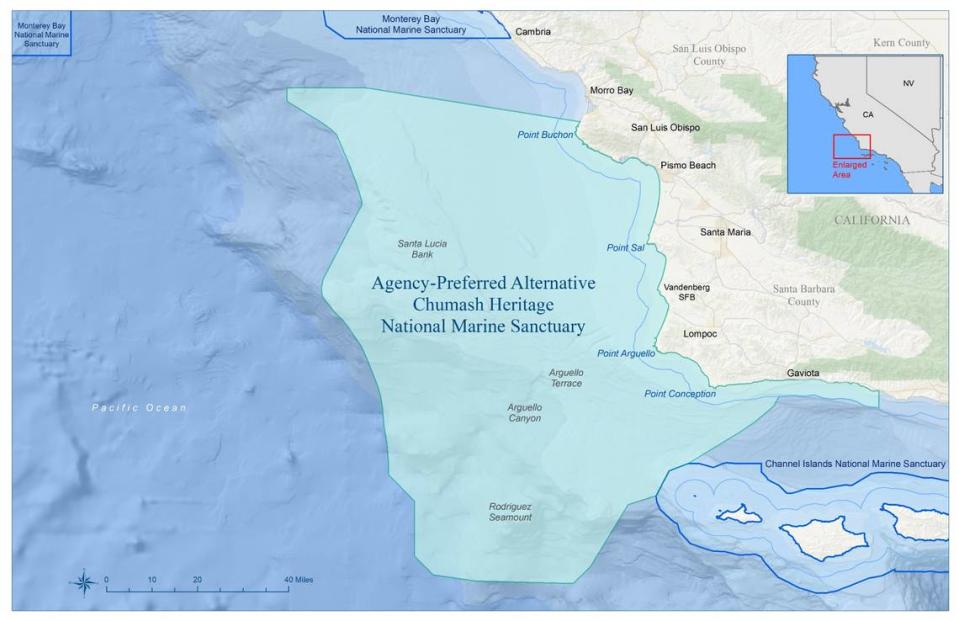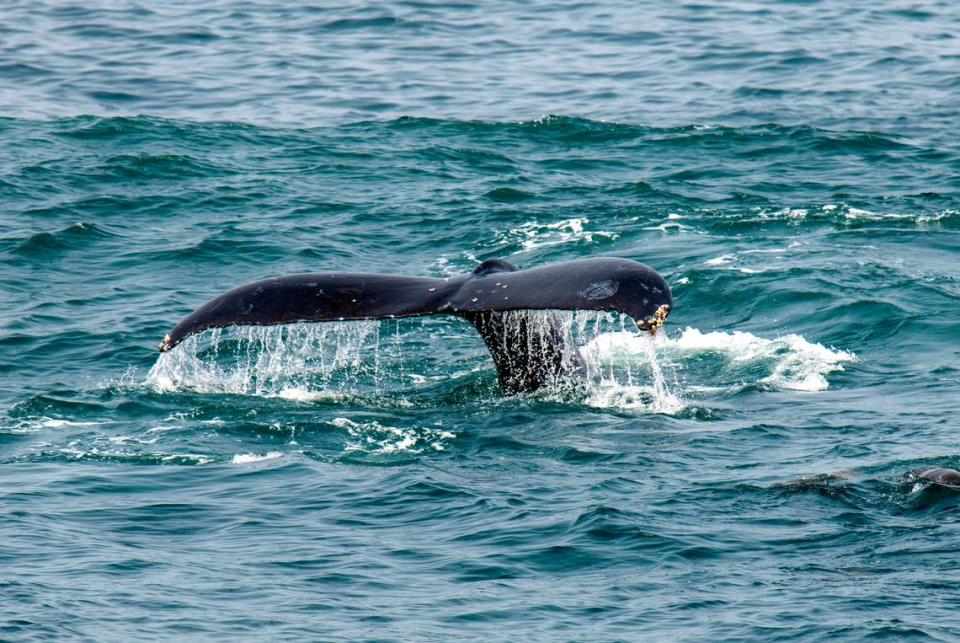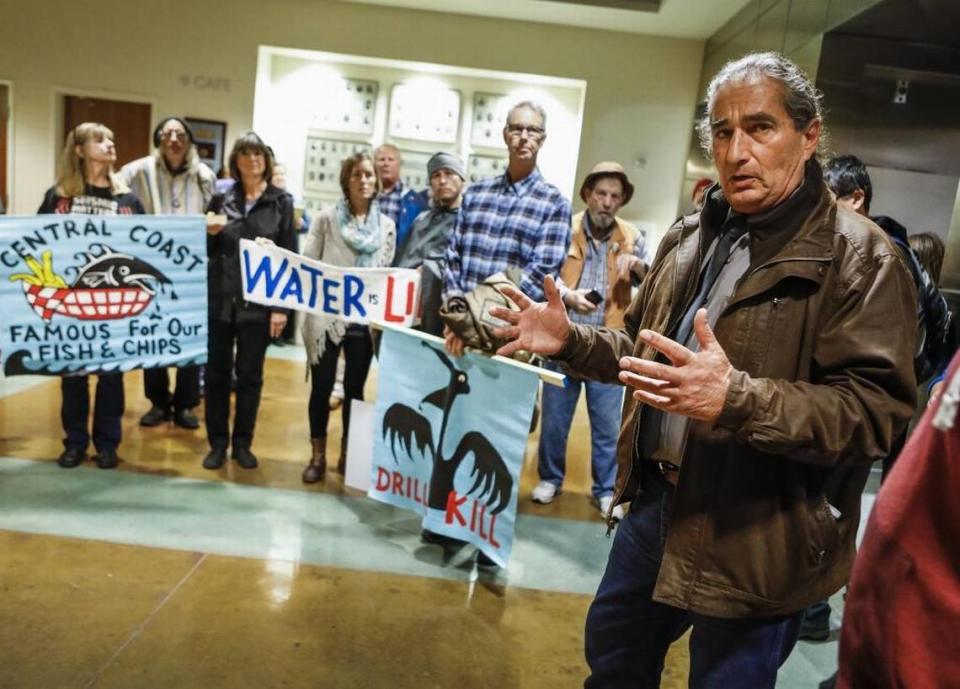What should Central Coast marine sanctuary be called? Tribes clash over ‘inaccurate’ name
Local Indigenous leaders agree they want to protect the Pacific Ocean along California’s Central Coast through a new national marine sanctuary.
However, they clash when it comes to the proposed name of the sanctuary: Chumash Heritage National Marine Sanctuary.
“When you’re putting another tribal name on our ancestral land, it’s wrong and it’s extremely disrespectful,” Karen White, council chair for the Xolon Salinan Tribe, told The Tribune.
As proposed by the National Oceanic and Atmospheric Administration, the Chumash Heritage National Marine Sanctuary would stretch from Hazard Canyon Reef, south of Morro Bay, to an area just north of Goleta in Santa Barbara County, according to draft designation documents released on Aug. 24.
The original nomination put forth by the Northern Chumash Tribal Council proposed that the sanctuary would stretch as far north as Cambria to meet the boundary of the Monterey Bay National Marine Sanctuary.
NOAA said it removed a roughly 30-mile-long stretch of coastline from Cambria through Morro Bay from the proposed sanctuary’s boundaries in part because it wanted to alleviate concerns about the name of the sanctuary. ‘
Although disputed by some tribal entities, modern-day maps place the boundary line between Chumash and Salinan ancestral lands as around Morro Bay.
NOAA has also said that removing the 30-mile section of the proposed sanctuary better enables the development of floating wind turbines in the Pacific Ocean.
Indigenous advocates have argued that the agency shouldn’t remove sanctuary protection from the coast to streamline such development. Instead, they say the agency should ensure there’s a process to safely allow offshore wind energy projects to proceed within the sanctuary.

Tribes propose alternative sanctuary names
Both Salinan and Chumash tribes say they want the sanctuary boundaries to reflect the original nomination so the entire Central Coast can be protected from harmful development such as oil drilling.
“The name is not more important than the sanctuary,” representatives from the Xolon Salinan Tribe, yak tityu yak tiłhini Northern Chumash Tribe, Barbareño Band of Chumash Indians, Salinan Trowtraahl and Barbareño/Ventureño Band of Mission Indians wrote in a joint letter to NOAA on Oct. 21.
“We propose a return to geographic naming conventions and suggest ‘Estero-Gaviota National Marine Sanctuary’ as an alternative,” the letter continued.

The Salinan Tribe of Monterey and San Luis Obispo counties wrote a letter to NOAA on Tuesday voicing its own concerns about the proposed name of the sanctuary.
“At this point, the proposed name is not only historically inaccurate, but it also continues to perpetuate the false narrative that the Central Coast of California from the Channel Islands to the Monterey County border is the home to only one homogenized culture, the Chumash culture,” the Salinan tribe wrote in its letter to NOAA.
The Salinan tribe points out in its letter that NOAA is well aware that the proposed sanctuary boundaries overlap with several different tribal ancestral lands.
“The coastal area in the study area has been occupied for centuries by Indigenous people,” NOAA’s Aug. 24 draft environmental impact statement for the proposed sanctuary said. “The area embodies a special sense of place with sacred meaning and significant cultural values for the Chumash, Salinan and other Indigenous people that still reside in the region today.”
In its letter the Salinan tribe suggested four alternatives for the name of the sanctuary: Pacific Coast Tribal Heritage National Marine Sanctuary, Chumash/Salinan Heritage National Marine Sanctuary, Indigenous Peoples Heritage National Marine Sanctuary and Central Coast Indigenous Heritage National Marine Sanctuary.

Original nominators of sanctuary want Chumash name to stay
The Northern Chumash Tribal Council has held steadfast on its proposed name for the sanctuary.
In an online petition circulated by the organization, the tribal council asks people to support the proposed name, Chumash Heritage National Marine Sanctuary because it honors “the cultural history and stewardship of California tribal peoples.”
“The name will recognize peoples that have lived on the California coast since time immemorial and protect the heritage of the Chumash, an ocean-going band among the First People of the Pacific Coast,” the petition continues. “We want to honor the late Chief Fred Collins’ nomination and vision for the sanctuary and the 10 years of work that the Northern Chumash Tribal Council did to campaign for the sanctuary.”
Collins’ daughter, Violet Sage Walker, is the tribal council’s lead.
She told The Tribune that those protesting the proposed sanctuary’s name seems to be attempting to sabotage its designation.
“The bigger picture is the overall goal of what we’re trying to do, which is protect the ocean,” she said.

Chumash name is offensive, some say
In interviews with The Tribune, tribal leaders such as White from the Xolon Salinan tribe and Mona Tucker, chairperson of the yak tityu yak tiłhini Northern Chumash Tribe, said designating the sanctuary is vital to the protection of the Central Coast’s ocean ecosystems.
“The reduction in the size of the sanctuary was outrageous,” Tucker said. “And the way to solve this is to change the name.”
White said that, should the sanctuary extend up to Cambria, keeping the name as Chumash Heritage disregards the historical conflicts between the different tribes along the Central Coast.
“There’s a lot of old history. Our ancestors protected that area,” she said, referring to the area around and north of Morro Rock. “There were many battles. They died for that land. We’re their voice, we need to speak up for what they did.”
White also noted that the names “Salinan” and “Chumash” were assigned to Indigenous tribes by the U.S. government and anthropologists.
“They put these generic names on our heads, so it’s not really how we called ourselves,” she said. “We can tell NOAA is trying to be respectful of the tribes, but they need to do better to truly respect us all.”

